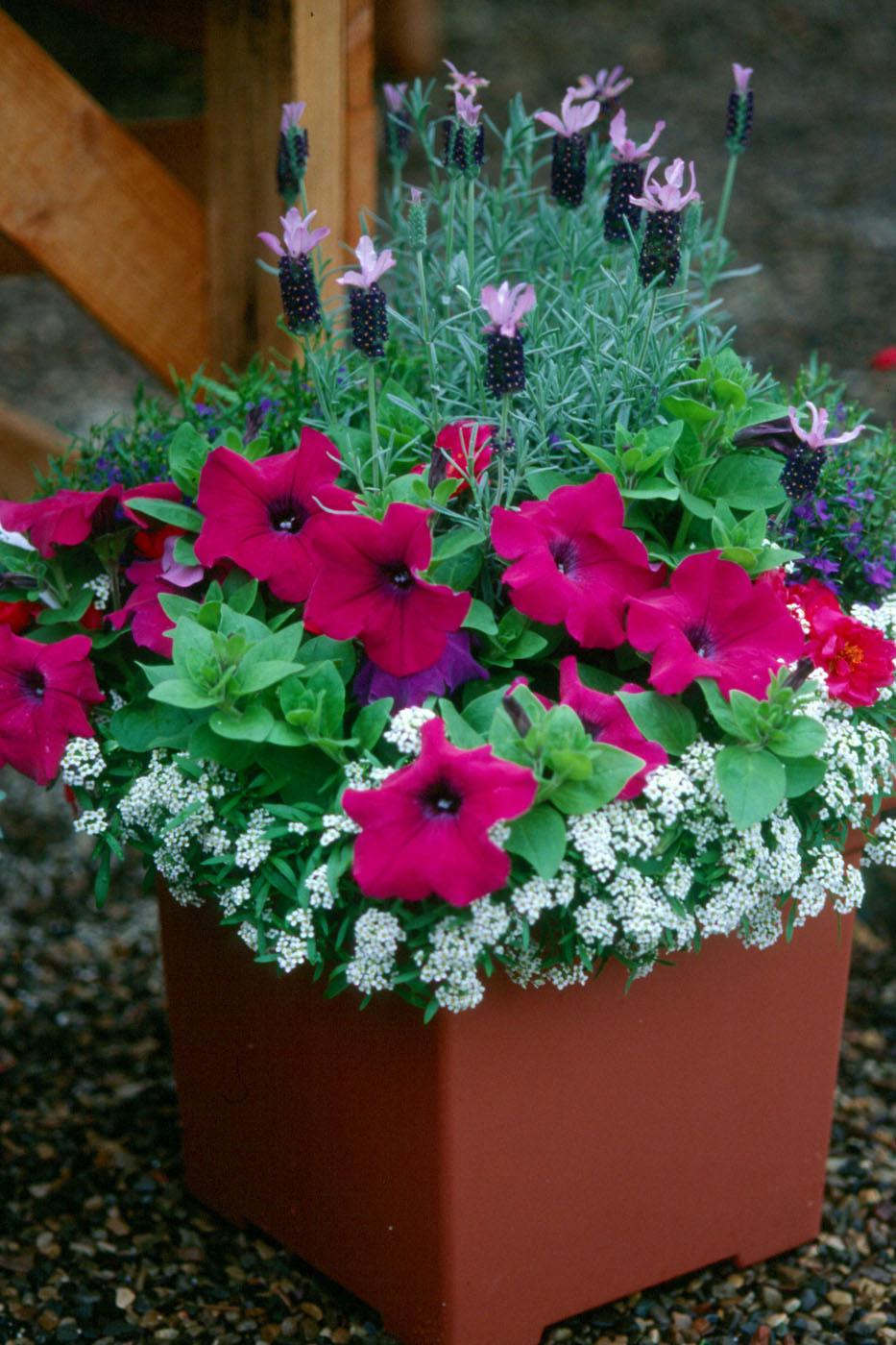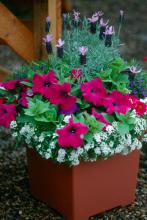Information Possibly Outdated
The information presented on this page was originally released on March 10, 2005. It may not be outdated, but please search our site for more current information. If you plan to quote or reference this information in a publication, please check with the Extension specialist or author before proceeding.
Mixed containers cause national design frenzy
By Norman Winter
MSU Horticulturist
Central Mississippi Research & Extension Center
Designing mixed containers has become a frenzied passion nationwide, and I have to admit I'm hooked, too. Nothing can liven up a porch, patio or deck like a large container filled with several species of blooming flowers.
Part of the appeal of mixed containers is that they allow those of us with cement-like soil to grow beautiful bouquets with ease. There are hardly any rules to container gardening, but good drainage is of paramount importance.
The container must drain freely. This means you must drill a hole if you are buying one of the Old World-like pots that look like they weigh 75 pounds instead of the few ounces they really are. Use a piece of old pantyhose or wire screen to cover the hole.
The next critical element of a successful container is the potting mix. Remember: cheaper is almost never better.
Look at the premium brands sold by the cubic foot or yard. Even though they are larger, they are lighter and easier to pick up. Many of the premium brands that are light and airy also have controlled-release fertilizer added, which helps get the plants off to a good start.
Compare premium brands with the cheaper bags that are sold by the pound. These bags are smaller but weigh much more. A container filled with this cheaper soil will be heavy and hard to move, and it will not drain as well, providing a poor environment for the roots of your plant.
Select a container that will give your plants' roots room to grow, but not so much that they will fill the pot. Consider the mature size of the plants you will be growing, and follow spacing recommendations.
Pots with a small amount of soil dry out faster and require frequent watering, so the deeper the pot, the less watering it will need.
Planting in containers is much the same as planting in the landscape. Plant bedding plants or shrubs and trees with the top of the root ball even with the soil line. Place large plants in first, then place smaller plants around the perimeter and in pockets created by greenery.
Keep the plants well watered as they get established, keeping in mind that containers dry out faster than flowerbeds. To keep plants well fed and blooming, use a time-released, granular fertilizer or water with a diluted liquid fertilizer.
Another great thing about containers is they allow us to grow plants that are a challenge to grow in the landscape. One I like is lavender. Lavender plants don't really like the hot and humid Southern landscape, but they give a pretty good performance in containers, thanks to superb drainage.
By all means, grow a variety of textures and shapes to give your container interest. For example, try large, spiky plants in the center, followed by another layer and then those that cascade or tumble over the rim. It's amazing that a small plant like sweet alyssum gently falling over the edge of a container can actually make a square pot seem round.
Gardening season is upon us. Be an artist and design some mixed containers for your home.



